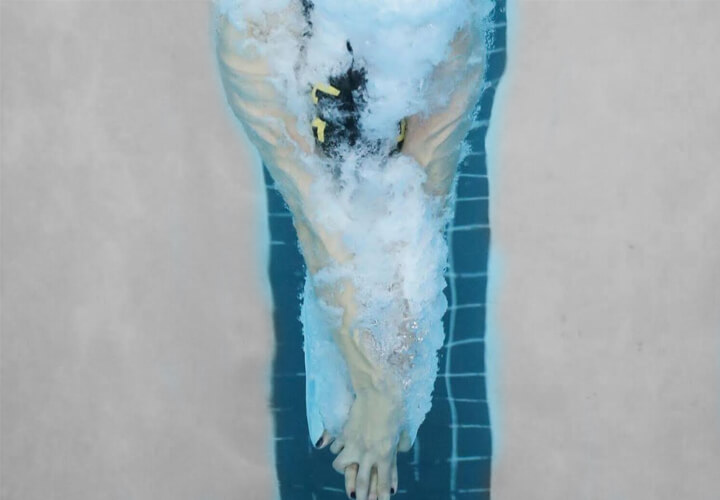Morning Splash: Teams on the Move at the SEC Championships

By David Rieder.
Late Friday night, I was looking for Connor Oslin. The Alabama senior had just won the SEC title in the 100 back for the third year in a row, becoming the sixth-fastest performer of all-time in the process. I wanted to find out what made that race so special for Oslin.
But while I was waiting to interview him, I noticed some event staff pull down the card marking Alabama’s seating area and replace it with one reading “LSU.” That area, just behind the lane eight block, would belong to the Tigers for the Saturday morning session, and then the women’s teams from Vanderbilt and Arkansas would share those bleachers for Saturday’s finals.
This wasn’t a case of some rogue meet managers moving teams around for no apparent reason. The conference’s coaches had agreed upon this system of rotating seating so that each team would have an opportunity to sit in the prime spots along the competition pool.
“The coaches actually voted to implement this process three years ago,” SEC swimming and diving sport administrator Brett Thompson explained. “I think it gives a fairer opportunity for each team to have that prime location. I think it works really well, and they all seem to be supportive of it and like it.”
South Carolina head coach McGee Moody explained that in the past, it was first come, first serve. Whatever team arrived late was out of luck for the entire meet.
“If you were the last, you got whatever was left over and most of the time spent the entire meet off the race course. And that was hard,” Moody said. “You have your teams that pick first, and they’re still going to spend the most time on the race course, but this puts everybody on the 25-yard racing lanes at least for a few sessions during the meet. I like it better.”
The coach explained that it’s not simply a matter of convenience since swimmers can feed off having teammates cheering within in their line of vision, particularly in the longer freestyle events.
“Most of these teams are putting a lot of folks back in finals, and so having your team able to stand there in the 25-yard racing lanes up and down the pool is a benefit,” Moody said. “Plus, honestly, when you have a distance event, 500s, even 200s to a point, your kids know where your team is sitting, and they can see them when they’re swimming, and so it adds to that environment.”
The SEC’s seating tradition only goes back two years, but the teams’ fans have rotated sections for even longer. Each school’s supporters are assigned a particular section to sit in for one session and move down the pool session by session, moving from the diving well towards the scoreboard. The event staff helps facilitate that process, too.
For instance, for Saturday night’s finals, Alabama, Georgia, South Carolina and Texas A&M all had prime viewing locations, while the fans of host Tennessee took their turn in the far corner—after getting their turn in the middle of the pool Thursday.
Of course, it hasn’t been the seating assignments that have been behind all the press the SEC meet has gotten this week. Understandably, the focus has been on Caeleb Dressel continuing his run of ridiculous times in the sprint events, the Texas A&M women flexing their depth on their way to a second-straight conference championship and other Olympians like Chase Kalisz and Olivia Smoliga all posting quality efforts.
But what makes the SEC meet perhaps the most exciting of any conference championship is the size and depth. There was the high-quality battle between the A&M and Georgia women for the team title, and behind those teams the battle between Kentucky, Tennessee and Auburn for third.
On the men’s side, nothing that transpired this week changes the fact that six different teams could finish in the top ten nationally if they perform up to their capabilities next month in Indianapolis. The conference remains by far the deepest in the country.
No other conference meet involves 12 teams and 22 total squads (Arkansas and Vanderbilt are women’s teams only), and no other meet extends for five full days to give athletes the best opportunity to be fresh for their prime events. That combination creates such an intense atmosphere that cannot be matched by perhaps any other conference in the country.
And with the unique seating arrangements, every swimmer gets a chance to race with their teammates, coaches and fans up close and personal.
All commentaries are the opinion of the author and do not necessarily reflect the views of Swimming World Magazine nor its staff.




